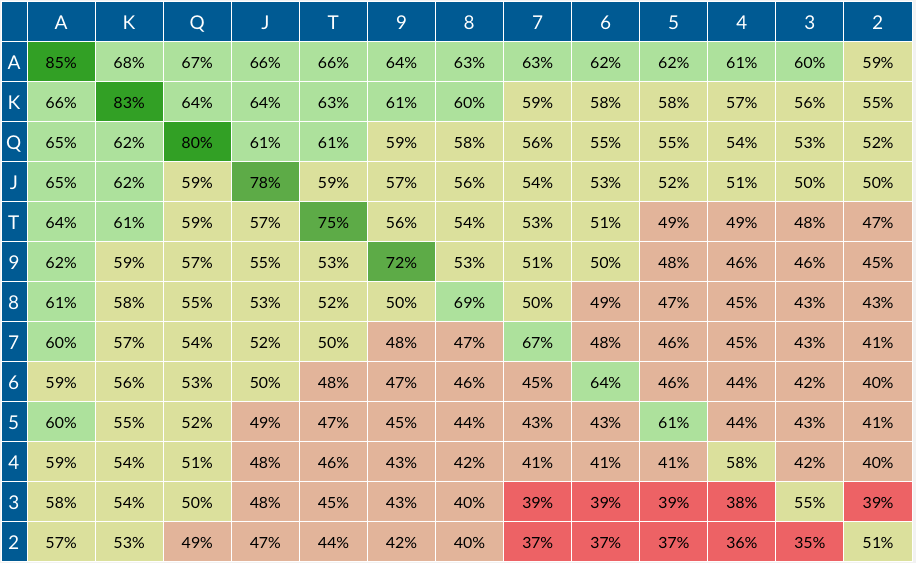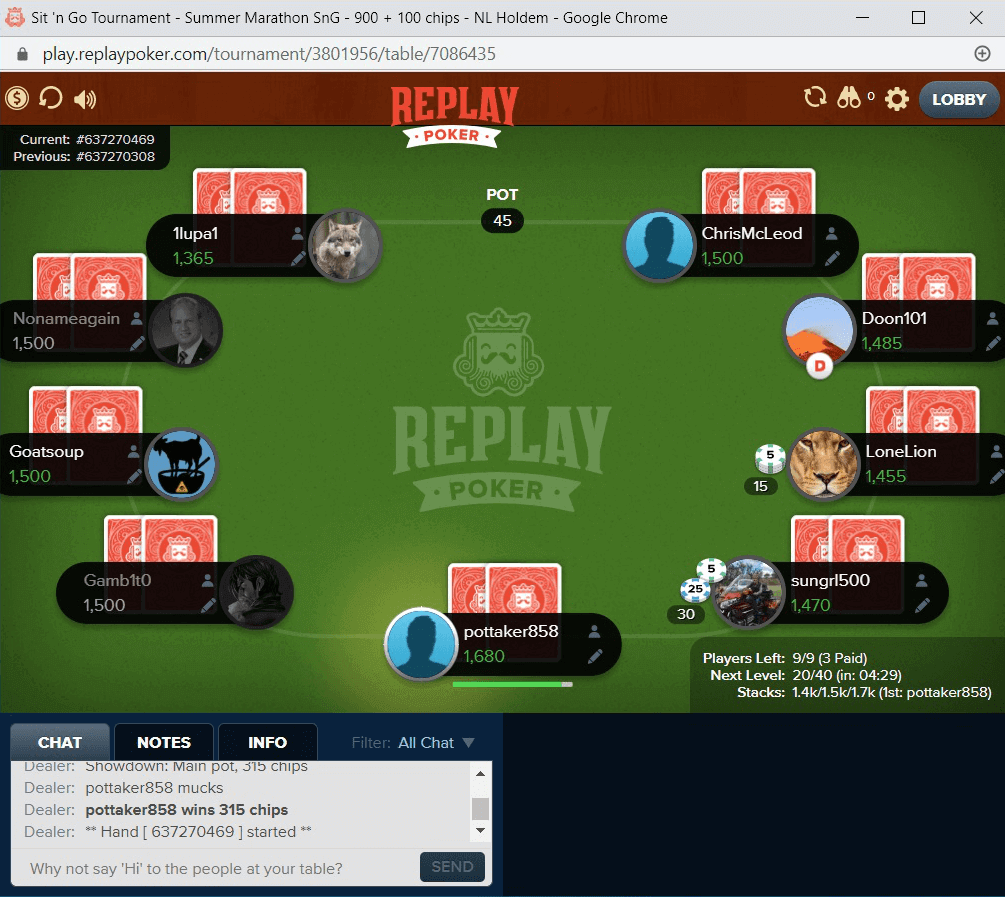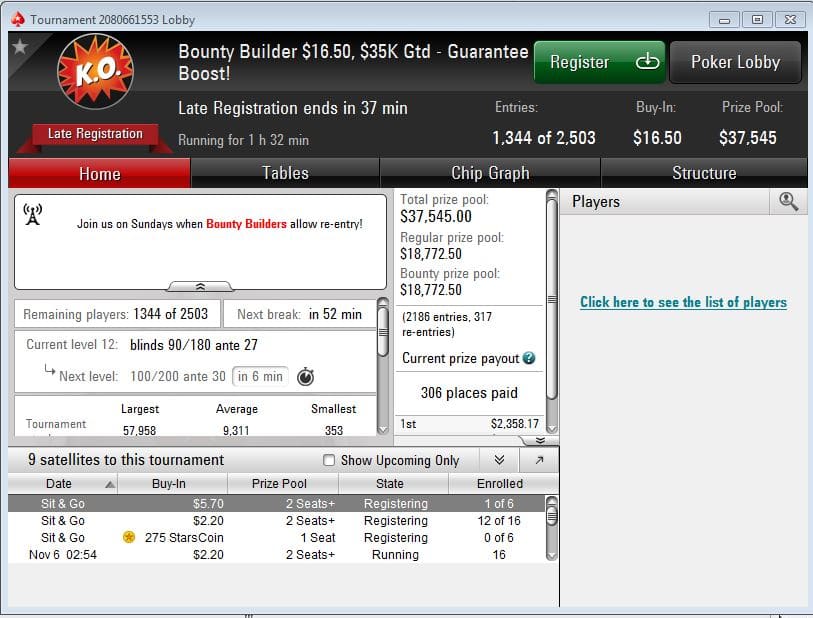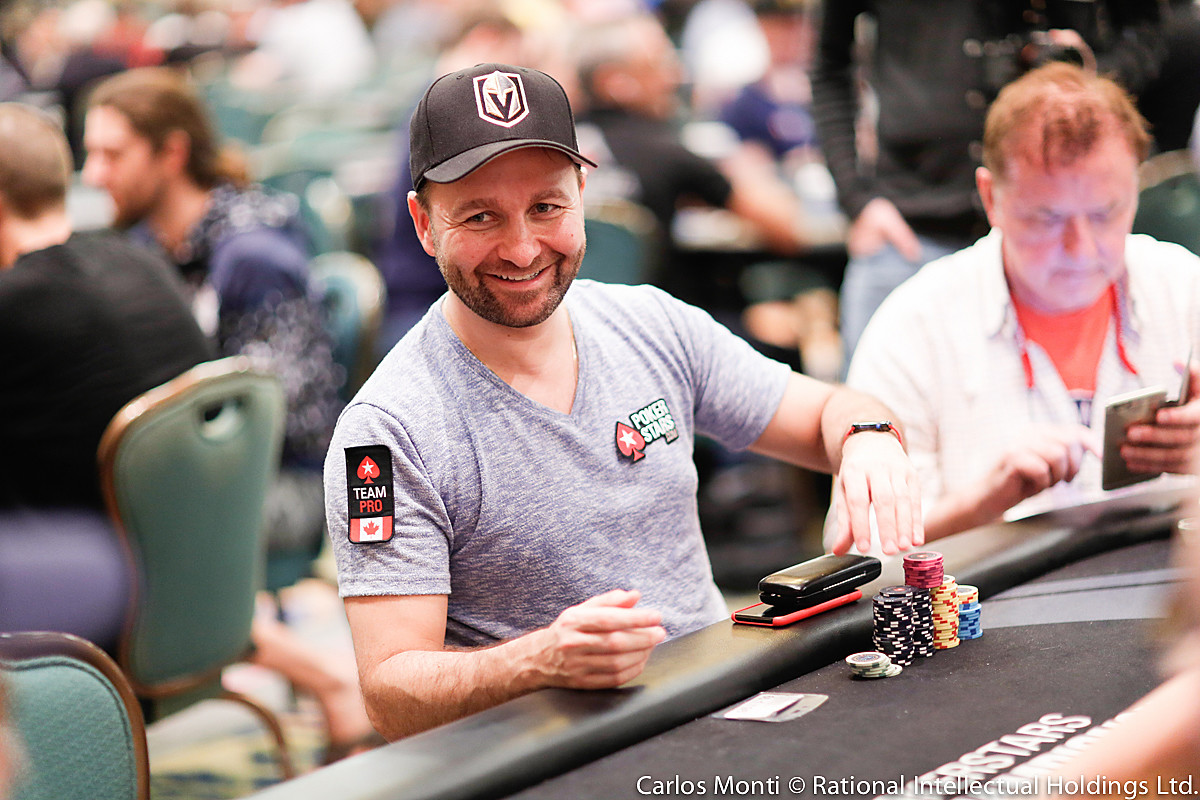Early Stage Poker Tournament Strategy
- Early Stage Poker Tournament Strategy Games
- Early Stage Poker Tournament Strategy 2019
- Early Stage Poker Tournament Strategy Tactics
We've covered some of the broader concepts affecting multi-table poker tournament strategy so far, including how tournaments differ from cash games, the importance of stack sizes in tournaments, and how the objectives of chip accumulation and survival work alongside each other in tournaments.
Early stage poker tournament strategy tips The strategy for deep-stacked, pre-ante tournament play is basically the same as in cash games. Early Stage Strategy – Pre-Antes The first rounds of an MTT usually involve players having deeper stacks relative to the blinds. Pots are generally small since there are no antes just yet.
From here let's begin to talk more specifically about tournament strategy as it changes from the first levels all of the way through to the final table — that is, how your approach should evolve and adapt as you move through the different 'stages' of a tournament.
There are two basic strategies for playing the early rounds of large tournaments (and, of course, many variations on these, as well as mixtures of the two): Aggressive Edit. Many players (amateur and professional alike) subscribe to an Aggressive tournament strategy and swear it is the best means to win a large or long tournament. Tournament poker is very challenging if you get bounced to 4 different tables through the day, which can easily happen if you are late to sign up. Early stage tournament poker can either be maddening or a lot of fun. If the loose play drives you crazy, by all means, buy in late. But early tournament stages can both entertain and educate. MTT Strategy: The Early Stage The early stage of a tournament is very similar to a cash game. The stacks are still very big in relation to the blinds. The main difference to a cash game is that we normally can’t re-buy in a tournament.
It's a big mistake to play a no-limit hold'em tournament the same way you might play a cash game. It's a similarly big mistake to play the early levels of a tournament the same way you'd play the middle or later stages, and vice-versa.

Priorities change as you proceed from the start of a tournament to the middle stages to the pre-bubble and bubble periods. Once the bubble bursts and the play for real money begins, they change again. Then the final table introduces its own special considerations — including what are usually significant changes in payouts coming with each elimination — that should further affect your strategy.
Today we'll focus on the early levels of a multi-table tournament, by which we're referring to just the first two or three. In most MTTs, these are the levels when there are blinds but no antes, and when stacks start out relatively deep in terms of how many big blinds they represent.
We'll organize the discussion under a few different headings, the first having to do with a common misconception about the initial levels of a tournament.

1. Early Levels Matter!
A number of players — including some who are very successful in tournaments — maintain the early, pre-ante levels of most tournaments simply don't matter. That's one reason why some players will skip the early levels altogether, sitting down at some point after the tournament begins but before late registration closes.

Starting the tournament on time can have a lot benefits, though. And those first levels absolutely do matter, no matter how deep the starting stacks might be. Weaker players will reveal themselves from the very beginning, becoming worthwhile targets for chip accumulation. Such players in fact tend not to last into the middle stages, meaning those who come late won't have a chance at their chips.

As such less skilled players sometimes demonstrate — e.g., by getting too attached to a middle pocket pair or some other medium-strength hand and busting — you can't win the tournament during the first few levels, but you can certainly lose it.
There are a few so-called 'standard' poker tournament moves you'll probably want to avoid during the early levels, among them preflop moves like three- and four-betting lightly or blind stealing. That doesn't mean you can't occasionally go for a blind steal, if only to shape your image going forward, though the chips you win or lose won't really be that significant as they'll represent such a small percentage of the stacks.
There's a lot else that's meaningful about the pre-ante levels, though, which can make them matter as you try to get your tournament off to a good start.
2. Dealing with Deep Stacks
Tournament structures differ widely, but in many cases the pre-ante levels will feature players sitting behind stacks that are uniquely deep compared to all other, later stages. In a lot of MTTs, the average stack will drop down to 50 big blinds or less (sometimes considerably less) by the middle stages, but during Levels 1-3 the stacks can be 100, 200, even 250 BBs deep.
A very common mistake made by inexperienced players (and even by experienced ones sometimes) is to 'go crazy' with their preflop betting during these early levels when there's no need to do so. With pocket aces and almost always with pocket kings you're obviously glad to build pots before the flop, but even with and you needn't be in such a hurry to play for your tournament life after a preflop raising war in Levels 1-3.
Even if you aren't getting all in before the flop with such hands, you can put yourself in awkward spots by bloating the pot beforehand and suddenly being 'committed' to going all the way on the flop, turn, or river. Flopping top pair, top kicker with is nice, but you shouldn't be eager to pile in a hundred big blinds behind such a hand — after all, someone willing to play that high versus you in such a spot probably has better!
Put Your New Knowledge to the Test For Free!Head over to the WSOP Social Poker, create your free account and put the knowledge you've learned in this article to the test with no financial risk.
WSOP Social Poker is perfect for practising new strategies without having to risk a single cent of your money. Why not try it out today?
Early Stage Poker Tournament Strategy Games
Play Now3. Tight Is (Mostly) Right, However...
Avoiding the urge to 'go crazy' doesn't mean being 'sane' to such an extreme that you fold your way through these early levels. Many successful tournament players subscribe to remaining 'snug as a bug in a rug' before the antes arrive, only very rarely getting involved. But you can be active during the initial levels, and reap benefits as a result.
One benefit of getting involved early is the way it gets you acclimated to both the physical and mental exercise that comes with playing each hand — and for relatively low stakes, too. Especially for newer or less experienced players, there's a lot to be said for simply getting your 'poker brain' working early, and even getting comfortable handling chips and cards again for those who aren't everyday players.
Getting involved early additionally helps you start gathering reads on opponents, as we always tend to pick up more about others when engaged in hands against them. You can accumulate chips during these levels, too, positioning yourself well with added ammunition once the antes do kick in and you begin your blind stealing ways.
Early Stage Poker Tournament Strategy 2019
Keep an eye out for the tight ones during the pre-ante levels. Often if you've taken the preflop initative against them and continuation bet after the flop, you'll earn some chips as they'll be unwilling to proceed without making hands. Be wary, of course, if they get 'sticky,' as such 'fit-or-fold' players aren't going deep postflop without being strong.
4. Trapping, and Not Getting Trapped
A great mindset to carry through these opening levels is to lean toward being tight and selective with the hands you play, but also keeping an eye out for situations to 'trap' players by playing speculative hands with potential to win big pots off those playing only the topmost part of their tight ranges.
Suited connectors and one-gappers can be great hands to play, and even when unsuited can be called with if you have position. Small pocket pairs also are generally worth trying to see flops with cheaply during the early levels. With all of these starters, you're looking to make especially strong hands like sets, straights, and flushes and hopefully get a lot of value from unsuspecting opponents who'll pay you off with their one-pair hands.
These hands work well because your 'implied pot odds' are often quite good during the early levels. Having such deep stacks makes it much more potentially profitable to call a raise from the blinds with (say) a hand like , because you and your opponent often will have 20, 30, even 50 times the size of the pot when the flop arrives.
By same token, don't be the one getting trapped early in a tournament! Be wary of weak aces — really anything from on down — and other 'trouble' hands like , , , and the like. Be careful with any hand with which you make top pair but face significant-seeming pressure from an opponent postflop. The smart ones — like you — are lying in wait, trying to trap you into committing significant chips when they have the best of it.
5. Profiling Opponents
Finally, one other important reason why the initial, pre-ante levels indeed 'matter' is the fact that even if the pots are relatively small, the amount of information you can potentially pick up about your opponents can be huge.
In a lot of cases, you'll be playing more hands with the players with whom you are seated to at the start than during any other stage of a tournament, save perhaps at a final table. Spend these first few levels getting an idea who are the aggressive players, who are the passive ones, and also who seems tight and who seems loose.
Remember even loose players will often be tighter during early levels, so don't mislead by false first impressions. But do pay close attention to showdown hands and make a note of who is playing what hands from what positions, as well as their tendencies toward aggression or passivity preflop and postflop. Try as well to remain aware of what kind of impression you might be making by your play during the pre-ante stage, and consider ways you might exploit that image to your advantage later on.
You should also bear in mind that you can play against your friends at WSOP Social Poker, meaning you will likely know how they play the game, but they could also try to mix things up by playing in a style that is completely different to how you usually perceive them, which adds to the fun!
Conclusion
Whether playing online poker or live, don't overlook the early levels of a multi-table tournament as meaningless. Nor should you think of the pre-ante period as only presenting opportunities to hurt your chances of going deeper and not help your cause.
It's true you can't win the tournament during the opening levels. But you can still start your tourney journey a winning way, putting yourself on a path to increase your chances of carrying it much further.
Also in this series...

This article was originally published on Aug. 2018, 2016. Last update: June. 10, 2019.
Early Stage Poker Tournament Strategy Tactics
Tags
tournament strategydeep-stacked strategymulti-table tournamentsno-limit hold’emstarting hand selectionpocket pairssuited connectorsdrawing hands